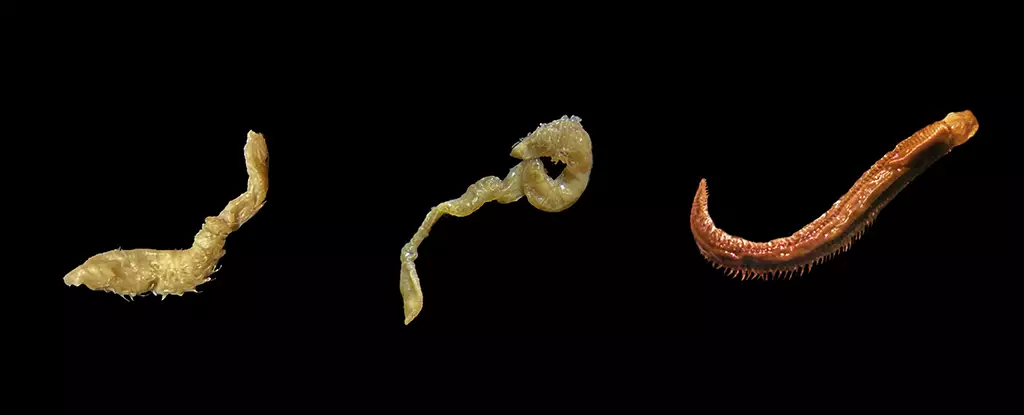The harsh and freezing conditions of Antarctica pose a significant challenge to survival for any living organism. However, recent research has unveiled a fascinating survival strategy employed by some marine worms in these extreme environments. These worms have formed a symbiotic relationship with bacteria that produce natural antifreeze substances, allowing them to thrive in temperatures below freezing.
A team of researchers from various institutions in Italy embarked on a study to explore the intricate relationships between marine organisms and their microbial counterparts. By collecting sediment samples from coastal areas in Antarctica, they discovered three species of worms: polychaetes (Leitoscoloplos geminus, Aphelochaeta palmeri, and Aglaophamus trissophyllus). These worms were unable to survive in water temperatures that were 1°C below freezing on their own.
The key to the survival of these marine worms lies in the bacteria Meiothermus and Anoxybacillus that reside within their bodies. These bacteria secrete proteins that contain chemicals like proline and glycol, which effectively lower the freezing point of the worms’ internal fluids. This prevents the formation of ice within their cells, much like the function of antifreeze in liquids. This unique adaptation highlights the incredible ways in which organisms can collaborate for survival in extreme conditions.
According to the researchers, this symbiotic relationship between marine worms and antifreeze bacteria has likely been in existence for generations. This partnership may have played a crucial role in the establishment of these species in the challenging environment of Antarctica. The transmission of these beneficial bacteria from one generation of worms to the next serves as a testament to the enduring nature of this evolutionary alliance.
The newfound understanding of the mechanisms behind the survival of marine worms in Antarctica opens up a myriad of possibilities for future research. One potential application of this knowledge is in the field of cryopreservation, where cells can be kept alive in freezing temperatures. Additionally, this research sheds light on the delicate balance of marine life in Antarctica, a balance that is continuously threatened by the effects of climate change.
The discovery of the symbiotic relationship between marine worms and antifreeze bacteria in Antarctica provides a glimpse into the complexity of survival in extreme environments. The collaboration between these organisms serves as a reminder of the evolutionary strategies that have allowed life to flourish in some of the harshest conditions on Earth. As we continue to unravel the mysteries of these relationships, we gain invaluable insights into the resilience and adaptability of marine life in the face of adversity.


Leave a Reply